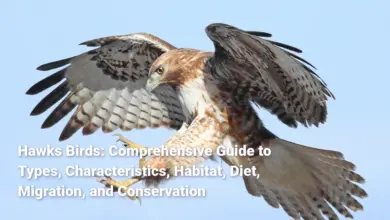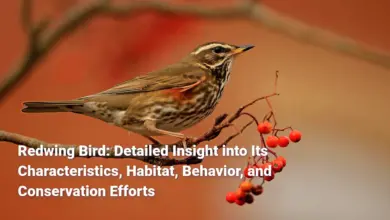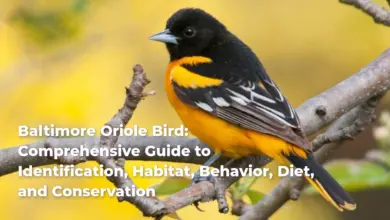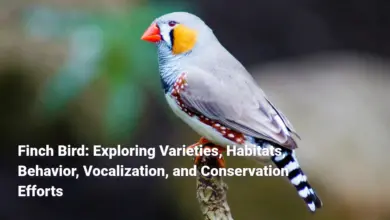Roseate Spoonbill: Physical Features, Feeding Habits, and Current Conservation Trends
An In-Depth Look at the Roseate Spoonbill's Appearance, Foraging Techniques, and Ongoing Conservation Efforts
The Roseate Spoonbill, known scientifically as Platalea ajaja, is a wading bird that captivates both birdwatchers and casual observers alike with its stunning plumage and unique feeding behaviors. Synthesizing the elegance of nature, these birds are an integral part of the coastal wetlands they inhabit. With their signature spoon-shaped bills and vibrant pink feathers, which range from soft pastel to dazzling magenta hues, they embody a rare charm that turns heads in both urban parks and pristine natural estuaries. The Roseate Spoonbill serves not only as a feast for the eyes but also as a critical focal point for conservation efforts aimed at protecting our wetlands and the biodiversity they support.
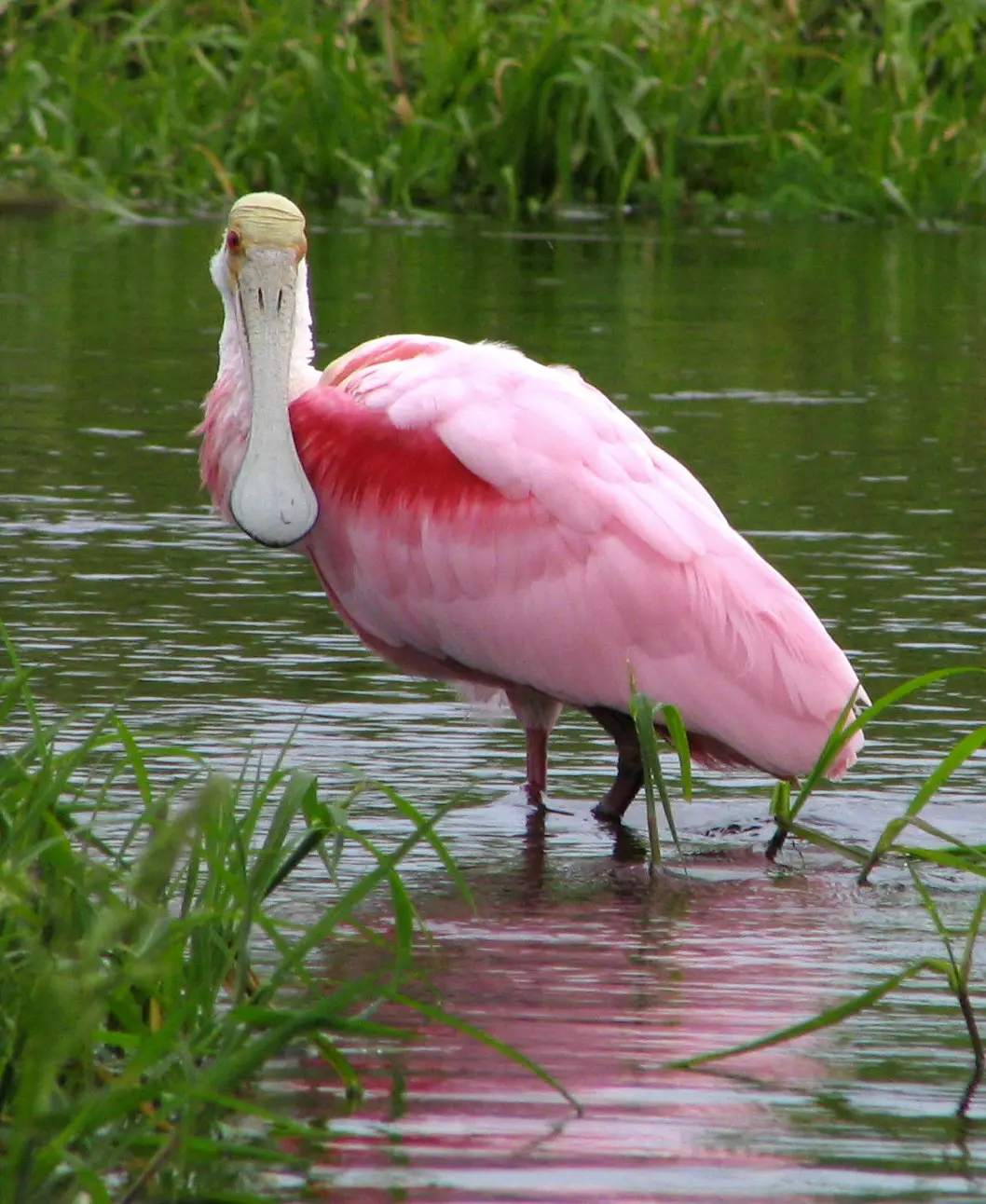
As we delve deeper into the world of the Roseate Spoonbill, we will explore its habitat and distribution, striking physical characteristics, feeding behaviors, breeding practices, and the vital role it plays in our ecosystems. By understanding this beautiful bird in greater detail, we can grasp the interconnectedness of wildlife, habitat, and our shared responsibility to protect them. The sublime allure of the Roseate Spoonbill stands as a beacon of both natural beauty and environmental significance.
Habitat and Distribution
The Roseate Spoonbill thrives in environments abundant with shallow waterways areas that act as both banquet halls and nurseries for myriad aquatic life. Much like how a painter requires the right canvas to create a masterpiece, the spoonbill needs specific habitats, such as marshes and coastal estuaries, to forage and reproduce effectively. Across their geographic range, these birds find comfort in the warm embrace of wetlands extending from the coastal shores of the southeastern United States down to the temperate climates of Central and South America.
Geographic Range in the Western Hemisphere
The geographic range of the Roseate Spoonbill is predominantly centered around the Western Hemisphere, showcasing a preference for warm, shallow waters. These birds make their home in the coastal bays and estuaries of the Gulf Coast, stretching all the way down to Argentina. Key areas of distribution include:
- Southeastern United States: Texas, Florida, Louisiana
- Central America: Belize, Guatemala, Honduras
- Caribbean: The Bahamas, Cuba, and other islands
- South America: Northern Argentina and parts of Brazil
Wherever they roam, Roseate Spoonbills rely on shallow marshes, mangroves, and estuaries, where crystal-clear waters and a wealth of food sources await. As these birds meander through their habitats, they glide like brilliant brushstrokes of pink through a verdant canvas teeming with life. For example, in Florida, the spoonbill is particularly esteemed; its vibrant shades infuse color into the state’s rich avifauna. These geographic settings provide essential foraging grounds, allowing them to thrive in an interconnected web of life.
Preferred Habitats: Marshes, Estuaries, and Coastal Areas
In examining the Roseate Spoonbill’s habitat, it’s helpful to think of these locations as multifaceted ecosystems each offering a plethora of resources required for feeding, breeding, and roosting. The primary habitats preferred by these stunning birds include:
- Marshes: These wetlands are saturated with shallow waters, perfect for foraging activities. The Rice and coastal marshes support a rich biodiversity that offers the spoonbills abundant food sources.
- Estuaries: Meeting points between rivers and oceans, estuaries provide brackish waters where the spoonbill can forage on crustaceans and fish. They play a vital role in nurturing the aquatic life that forms the backbone of the spoonbill diet.
- Coastal Areas: White sandy beaches, lagoons, and mangrove swamps provide nesting sites and safe havens from predators while infusing their diet with a variety of aquatic invertebrates.
The ecosystem’s health can be likened to a symphony, where each element plays a unique and vital role, contributing to the overall harmony. For the Roseate Spoonbill, thriving in these dynamic coastal zones showcases their adaptability and reliance on diverse habitats for survival.
Physical Characteristics
The mesmerizing aesthetics of the Roseate Spoonbill make it one of nature’s striking personalities. With an elongated neck, long legs, and a bill that resembles an artist’s palette, it stands out in the world of wading birds. The feathers of the spoonbill, ranging from tender pastel pink to deeper, lustrous magenta, create a visual feast against the backdrop of verdant marshes and tranquil lakes.
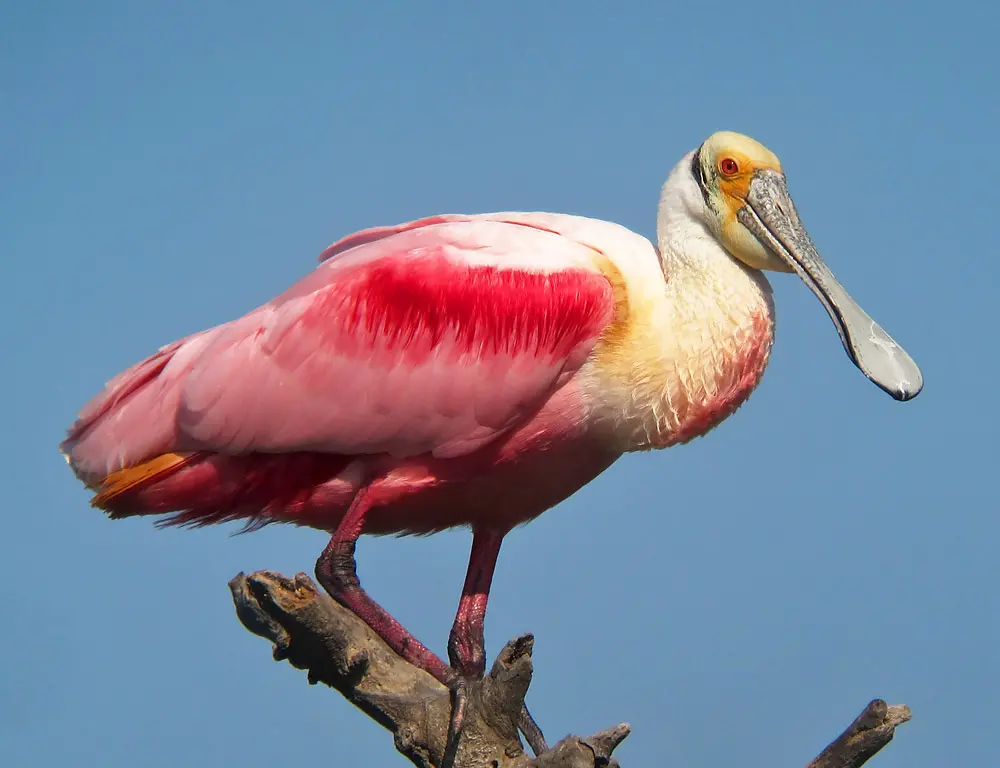
The physical composition of the Roseate Spoonbill incorporates:
- Distinguished Plumage: The bird’s vibrant hues are largely derived from its diet rich in carotenoids, which it absorbs through the crustaceans that make up a significant portion of its meals. The paradox of its coloration showcases nature’s ability to reflect one’s environment back at them.
- Spoon-Shaped Bill: This uniquely adapted bill not only serves as a key identifier for the species but is integral in its foraging technique. Sensitive and dexterous, the bill is adept at stirring up sediments in search of small fish and crustaceans reinforcing the functional artistry of the spoonbill.
- Size and Wingspan: Adult Roseate Spoonbills typically measure around 80-90 cm (31-36 inches) in length, carrying a wingspan that can reach up to 1.2 meters (almost 4 feet).
- Gait: While wading through shallow waters, the spoonbill’s long legs articulate a graceful choreography, allowing it to navigate its habitat fluidly while hunting for food.
In sum, the physical characteristics of the Roseate Spoonbill harmonize its practical adaptations with eye-catching beauty. Each feature plays a pivotal role in its survival within the delicate ecosystems it inhabits.
Distinctive Pink Plumage of the Roseate Spoonbill
The defining feature of the Roseate Spoonbill the distinctive pink plumage serves as not just a visual marvel but a testament to the intricate relationship between diet and color. The intensity of the pink varies significantly, influenced largely by the bird’s environment and nutritional intake. Young spoonbills may flaunt a paler coloration, while mature individuals may exhibit vibrant shades due to accumulated carotenoids from their diet comprised chiefly of crustaceans.
- Dietary Impact: The carotenoids sourced from shrimp and other shellfish give the spoonbills their iconic plumage, symbolizing a connection between diet, habitat, and beauty. Think of it as a reflection of a well-nourished life; the richer the diet, the bolder the color.
- Breeding Season Changes: During mating season, males may display brighter plumage as a courtship strategy to attract females. This can be compared to the way flowers aim to showcase their vibrancy to attract pollinators adaptation manifesting as environmental chemistry.
- Cultural Representations: The stunning pink of the Roseate Spoonbill has captured the imagination of artists and ecologists alike, appearing prominently in works associated with coastal environments. It has been celebrated as a symbol for marsh habitats, a reminder of the beauty found in ecological balance and biodiversity.
- Environmental Significance: The vibrancy of the spoonbill is not merely a visual attribute but an important indicator of ecological well-being. It stands as a bellwether for changes in their environment, and variations in their population can signal larger issues of habitat health.
Understanding the significance of the Roseate Spoonbill’s plumage enriches our appreciation for this remarkable bird and emphasizes the interconnectedness of diet, habitat, and aesthetic wonder.
Spoon-Shaped Bill and Bill of the Roseate Spoonbill and Adaptations
The Roseate Spoonbill’s most distinctive trait the spoon-shaped bill serves as a remarkable example of evolution tailored to meet environmental needs. This unique morphology not only sets them apart from other wading birds but also plays a pivotal role in their foraging efficiency.
- Functional Design: The spoon-shaped bill is not an accident of nature; it has been finely honed to function effectively in shallow waters. The bill’s flat and wide structure enables the spoonbill to sift through mud and water, filtering its prey with every sweep.
- Sensory Adaptation: With sensitive nerve endings lining the bill, these birds can detect vibrations in the water, solidifying their effectiveness as foragers. This sensory adaptation is akin to a musician who can hear through the noise of a busy street able to hone in on the subtle sounds of their environment.
- Feeding Behavior: While foraging in groups, spoonbills often employ a synchronized feeding technique. When several birds stir the shallows together, they create a collective effort that ensures a greater chance of locating prey while enjoying the safety of numbers meshing efficiency with sociality.
- Comparison with Other Wading Birds: In contrast to species like herons, which use spear-like bills to hunt down visually perceived fish, the spoonbill’s strategy reflects a different method of exploitation of its habitat. While other waders may stalk prey, the Roseate Spoonbill embraces a more tactile approach, utilizing its bill to engage deeply with the submerged environment.
The spoon-shaped bill stands not only as a functional and unique adaptation but as a beacon of evolutionary success, reflecting the resilience and resourcefulness of wildlife as they navigate the complexities of their ecosystems.
Feeding Behavior
The feeding behavior of the Roseate Spoonbill embodies a natural ballet a dance performed on the water’s surface, where methodical movements facilitate survival. Their approach to foraging is distinctive and reflects their intricate connection to the aquatic ecosystems they inhabit.
Head-Swinging Technique for Foraging by the Roseate Spoonbill
The Roseate Spoonbill has developed an elegant head-swinging technique that is integral to its successful foraging habits. This method involves sweeping their iconic bill from side to side while wading gently through shallow waters, allowing them to feel and capture their prey effectively.
- Movement Dynamics: As each spoonbill gracefully swings its bill, it stirs up the sediment, causing a mini upheaval that dislodges small fish and invertebrates. This can be compared to a skilled dancer leading a partner across the floor, where each movement creates waves of opportunity.
- Behavioral Coordination: Feeding often occurs in groups, where individuals synchronize their actions, heightening their ability to forage efficiently. This collective behavior can also be likened to a well-choreographed dance troupe, where the synergy enhances each performer’s effectiveness.
- Tactile Hunting Strategy: When probing in muddy waters, the spoonbill relies heavily on its tactile senses, emphasizing a unique contrast to other wading birds that rely more heavily on visual cues. Through their senses, these birds navigate the inundated understory, enhancing the foraging experience.
- Seasonal Feeding Patterns: Seasonal migrations and variable conditions influence their feeding strategies. During breeding seasons, food availability influences the locations spoonbills choose for nesting and foraging. The dynamic between habitat choice and seasonal feeding behaviors highlights the adaptability embedded within their species.
Through their elegant and efficient foraging technique, the Roseate Spoonbill not only captures its sustenance but also exemplifies the complex interplay between wildlife and their habitats.
Diet of the Roseate Spoonbill: Aquatic Invertebrates and Carotenoids
The diet of the Roseate Spoonbill is as colorful as its appearance, predominantly composed of aquatic invertebrates that thrive in their shallow water habitats. These nutrition sources directly affect their physical appearance and reproductive success.
- Primary Food Sources: The Roseate Spoonbill’s diet mainly includes small fish, crustaceans, and aquatic invertebrates. The availability of these food sources varies across different habitats, and this adaptability allows them to thrive in various ecological conditions. Specific dietary preferences include:
- Crustaceans: Shrimps, crabs, and other crustaceans form a significant part of their diet, especially rich in carotenoids, which influence their plumage color.
- Small Fish: Opportunistically, they feed on small fish when available, showcasing a flexible approach to sustenance.
- Aquatic Insects: This category complements their diet, further enhancing the nutritional variety extracted from their environment.
- Influencing Coloration: The vibrant pink feathers of the spoonbill serve as a striking indicator of its diet. The carotenoids consumed through crustaceans directly correlate with the vibrance of the bird’s plumage. It’s as if their physical presence tells a story of their feeding habits.
- Feeding Techniques: Reflecting their adeptness at foraging, spoonbills employ a range of techniques beyond just the characteristic head-swinging motion. Scavenging, sweeping, and tactile exploration through the water allow them to optimize their feeding strategies based on environmental conditions.
- Nutritional Trade-offs: While the availability of food can be affected by environmental changes such as water salinity and habitat degradation these challenges also underscore the importance of preserving healthy wetlands. Healthy habitats ensure not only the sustenance of the spoonbill but also the broader ecosystem that support diverse wildlife.
The Roseate Spoonbill’s feeding habits and dietary richness reflect a delicate balance of ecological interdependencies, where each meal contributes to their striking appearance and health.
Breeding and Reproduction
Roseate Spoonbills possess a fascinating approach to breeding and parenting. Their reproductive behaviors showcase their adaptability and commitment to ensuring the survival of their offspring, all while reflecting their social nature.

Nesting Sites and Materials of the Roseate Spoonbill
Roseate Spoonbills tend to gravitate towards specific environments for nesting. Their choices are driven by both safety and resource availability in their habitats.
- Nest Locations: Typically, spoonbills nest in colonies that include low shrubs, mangroves, or trees near water sources. Nesting among other wading birds signifies a strategic adaptation, reinforcing safety in numbers against potential predators.
- Nest Construction: The nests themselves are built using materials such as sticks, reeds, and grasses, with both male and female participating in the construction process. The male often brings materials to the female, and they collaboratively weave them into a secure home for their eggs.
- Shape and Size: Spoonbill nests generally form shallow, cup-shaped structures that provide a platform for laying eggs. Their craftsmanship is a testament to their adaptability, as the nests must withstand the elements while providing safety for their fledglings.
- Colony Dynamics: Nesting in colonies not only enhances security for the young hatchlings but also promotes social interactions, reinforcing the communal behavior of these birds. There is a shared sense of safety in numbers, creating a social fabric among the species within their nesting colonies.
The nesting practices and materials utilized by the Roseate Spoonbill exemplify a remarkable ecological evolution where communal living intertwines with resource-awareness to fortify the next generation.
Courtship and Mating Behavior of the Roseate Spoonbill
Courtship behaviors among Roseate Spoonbills unfold in the graceful dance of avian romance. Their rituals and social behaviors contribute to the complexity of mating practices.
- Display Rituals: Courtship rituals among spoonbills include a series of elaborate displays dancing, bill clapping, and intricate vocalizations that signal readiness to mate. These behaviors are vital for attracting partners, much like a dance to woo an audience in the theater.
- Pair Bonding: Spoonbills typically practice serial monogamy, forming lasting bonds for a single breeding season. This commitment allows for more successful breeding as both parents collaborate in nesting and caring for the young.
- Egg-Laying Patterns: Female spoonbills lay a clutch of 2 to 5 eggs, depending on environmental conditions and food availability. These eggs are usually incubated for about 22 to 23 days, with both parents sharing the responsibility.
- Parenting Developments: Once the chicks hatch, both parents actively participate in nurturing the young, ensuring their survival through cooperative care. The chicks are altricial, meaning they are dependent on their parents for warmth, food, and protection during their early days.
These intricate courtship and mating behaviors emphasize the importance of social dynamics in Roseate Spoonbill reproductive success. Nature’s choreography shines through, combining beauty and practicality in their breeding habits.
Offspring Development and Lifespan
The development of Roseate Spoonbill chicks is a delicate process marked by parental investment and vulnerabilities. Understanding their life stages enriches our perspective on their lifecycle.
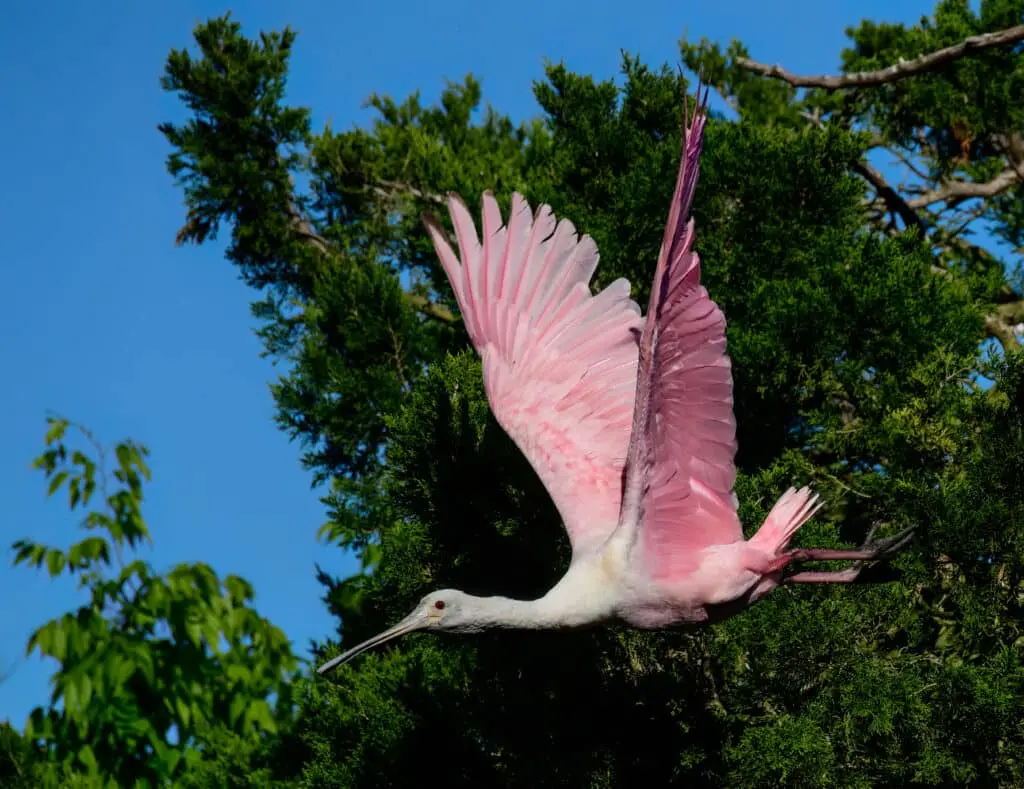
- Hatching and Early Development: Upon hatching, spoonbill chicks are covered in soft down feathers and exhibit helplessness. Their reliance on parents for warmth, protection, and food is imperative during these early life phases.
- Nestling Behavior: Over the next few weeks, the nestlings will gradually mature, gaining strength as they are fed by their parents a diet based on the same aquatic invertebrates that nourished them in the womb. This parental care endures well beyond the hatching stage.
- Fledging Period: The ability to fledge typically occurs at about 6 to 7 weeks after hatching. By 11 to 14 weeks, they develop sufficient strength and skills to forage and fend for themselves, signifying the transition from dependency to independence.
- Lifespan Considerations: In natural habitats, Roseate Spoonbills can live for around 10 to 15 years. In captivity, their lifespan may increase due to reduced predation and access to consistent food supplies, yet many factors influence their longevity in the wild.
Through the lifecycle of the Roseate Spoonbill, from the nurturing of vulnerable nestlings to the emergence of fledglings, we witness the extraordinary resilience of nature’s designs. The intricate relationships between generations signal the importance of maintaining strong, healthy populations for future stability.
Population and Conservation Status
In contemporary ecological discussions, the Roseate Spoonbill emerges not merely as a visual icon but as a sentinel of conservation. Understanding their population dynamics and conservation status emphasizes the impact humans have on these magnificent creatures.
Historical Population Decline: The Feather Craze
Historically, the Roseate Spoonbill faced dramatic declines due to commercial hunting driven by the demand for its exquisite feathers. During the late 19th and early 20th centuries, the “feather craze” decimated populations, leading to dire consequences for their survival.
- Market Pressures: With the rise of fashionable hat-making, the feathers of the spoonbill became highly sought after. This extensive hunting resulted in severe population declines, which affected breeding pairs significantly.
- Decline in Florida: By the 1930s, fewer than 20 nesting pairs remained in Florida a haunting testament to the devastating impact of hunting and habitat loss. Their decline alerted conservationists to the urgent need for protective measures.
- Raising Awareness: Conservation groups like the Florida Audubon Society played a pivotal role in mobilizing efforts to protect the spoonbill from extinction. Their activism helped to lay the groundwork for regulations that would transform the future of this species.
- Legislative Action: Legal protections introduced later including the U.S. Migratory Bird Treaty Act played an essential part in the resurgence of Roseate Spoonbills, marking a significant turning point that ultimately led to their population recovery.
Conservation Efforts and Legal Protections for the Roseate Spoonbill
Following the dramatic historical declines in their populations, concerted conservation efforts have been instrumental in reviving and protecting the Roseate Spoonbill.
- Protected Areas: Establishing wildlife preserves and protected areas has allowed for safer breeding habitats and foraging grounds for Roseate Spoonbills. Significant areas like the Everglades National Park are crucial for their survival.
- Population Monitoring: Ongoing studies and monitoring initiatives are crucial in tracking population dynamics and assessing habitat health. This vigilance ensures timely responses to emerging threats.
- Legislation: Various laws, such as those under the migratory bird acts, provide framework for protecting not just the Roseate Spoonbill but also the habitats essential for its survival.
- Community Engagement: Wildlife organizations emphasize community involvement in conservation efforts, encouraging local actions that contribute positively to habitat preservation and birdwatching initiatives.
Together, these concerted efforts reflect a holistic understanding of conservation recognizing the intertwined fates of humans and wildlife as we strive for equilibrium in our ecosystems.
Current Population Trends and Threats to the Roseate Spoonbill
As of recent estimates, the population of Roseate Spoonbills in North America indicates a cautious resurgence thanks to previous conservation efforts, yet multiple threats still cast shadows on their future.
- Population Estimates: Experts estimate that the current North American population ranges around 11,000 individuals, with a global count between 100,000 to 250,000 spoonbills. These figures demonstrate a stabilization of populations, but localized declines reflect ongoing vulnerabilities.
- Region-Specific Challenges: Regions such as Florida and Louisiana still experience challenges attributable to habitat loss and human disturbances. The alteration of wetlands profoundly affects their foraging and nesting opportunities.
- Climate Change Impacts: Rising sea levels and changing weather patterns pose significant risks increasing the vulnerability of spoonbill habitats. Future adaptations may be necessary to ensure long-term survival as conditions evolve.
- Conservation Opportunities: The Roseate Spoonbill remains classified as a species of “Least Concern” on the IUCN Red List but is still monitored due to the specific threats they face. Conservationists advocate for ongoing habitat protection strategies as a proactive approach.
Acknowledging current population trends and the persistent threats they face is paramount in ensuring the path toward stability for the Roseate Spoonbill remains illuminated.
Social Behavior
In the bustling ecosystem of wading birds, the Roseate Spoonbill thrives in social settings its interactions reflecting the communal nature that is vital for its survival.
Flocking and Social Interactions of the Roseate Spoonbill
Roseate Spoonbills engage in varied social behaviors, adapting to their surroundings and maximizing their foraging efficiency. Their flocking tendencies embody an intricate social structure.
- Feeding in Groups: Spoonbills prefer to forage in groups, often seen congregating with other bird species like egrets and ibises. This gregarious personality bolsters their chances of locating food similar to how students might gather in study groups for collective learning.
- Cooperative Dynamics: By feeding together, spoonbills create a unique method of uncovering prey, as their collective movement stirs the waters and attracts the attention of their next meal.
- Communication Signals: These birds engage in subtle vocalizations and body language to communicate and establish bonds within their flocks. The social interactions reflect a bond much like friendships among humans fostering both security and collaboration.
- Roosting Sites: At night, spoonbills gather in communal roosting sites where they rest, often in trees or shrubs near feeding areas. This social behavior provides safety and warmth, enhancing their survival prospects.
Through their social behavior, the Roseate Spoonbill epitomizes the strength found in community a crucial narrative in both avian and human societies.
Feeding and Roosting Habits
The meticulous routines of feeding and roosting highlight the Roseate Spoonbill’s adaptability and emphasize its dependence on a cohesive habitat.
- Feeding Habits: As diurnal feeders, spoonbills primarily forage during the day in shallow waters, where they utilize their unique feeding techniques to capture prey. This dynamic engagement with their environment showcases their ecological role.
- Roosting Patterns: At dusk, the spoonbills retreat to roosting sites, often congregating in large colonies. Their choice of roosting location allows for accessible feeding grounds while providing protective cover against potential threats.
- Seasonal Shifts: The spoonbill’s feeding and roosting habits can shift with seasonal variations in prey availability and the changing environmental conditions of their habitats. Such adaptability highlights their sensitivity to ecological changes and underscores the importance of maintaining healthy wetlands.
- Social Learning: Young spoonbills often learn feeding techniques and social cues from older adults, fostering a communal learning environment that enhances the survival of the species. This educational aspect can be seen as an extension of social bonding.
Through their intricate feeding and roosting behaviors, the Roseate Spoonbill exemplifies the essence of adaptability in the natural world.
Unique Facts and Trivia
In the enchanting world of the Roseate Spoonbill, vibrant coloration, unique behaviors, and ecological significance contribute to their allure. Here are some fascinating facts that enhance our understanding of this magnificent bird:
- Coloration Spectrum: The pink coloration of the Roseate Spoonbill can vary depending on diet, age, and breeding status, with breeding adults usually displaying more vivid shades. This dynamic reflection of their lifestyle adds to the aesthetic narrative of their lives.
- Social Flocking: Roseate Spoonbills are often seen feeding and roosting in large groups with other wading birds, reinforcing a communal behavior that enhances their efficiency in foraging.
- Distinctive Breeding: Unlike many wading birds, spoonbills engage in serial monogamy, forming bonds only for the duration of a breeding season before selecting new partners.
- Cultural Reflections: Spoonbills have inspired art and advocacy surrounding wetland conservation, standing as symbols of natural beauty and ecological richness.
- Historical Resilience: The successful recovery of the Roseate Spoonbill from near extinction showcases the power of conservation efforts and community action.
Understanding these unique aspects of the Roseate Spoonbill adds depth to their ecological narrative and inspires a collective commitment to conservation.
Comparison to Other Wading Birds
The Roseate Spoonbill holds a distinctive position in the avian world, especially when compared to other species of wading birds. Their unique characteristics set them apart in both appearance and behavior.
- Color Variance: While other wading birds like herons and egrets display predominantly white or grey plumage, the vibrant pink of the Roseate Spoonbill is unmatched, stemming from its diet of carotenoids found in arthropods.
- Feeding Mechanism: Most other wading birds, including the Great Blue Heron, employ spear-like methods to catch prey. In contrast, spoonbills utilize a sweeping motion with their unique bills to forage more tactically, emphasizing a tactile rather than a visual hunting strategy.
- Social Structures: Spoonbills are gregarious, often nesting in large colonies and collaborating during feeding. In comparison, some solitary waders, like the Sandhill Crane, may prefer smaller groups or solitary feeding strategies.
- Courtship Displays: The Roseate Spoonbill engages in elaborate courtship behaviors such as dancing and bill clapping, signifying bonding and attraction. This is a more theatrical approach compared to the often subtle mating rituals of other waders.
- Conservation Dynamics: Like many wading birds, the Roseate Spoonbill faced historical declines due to hunting and habitat destruction. However, their recovery efforts provide a powerful testament to conservation practices, often serving as an emblem for broader wetland protection initiatives.
By exploring these comparisons, we unveil the striking individuality of the Roseate Spoonbill and affirm its unique place within the grand ecological tapestry of wading birds.
Lifespan in the Wild vs. Captivity
The lifespan of Roseate Spoonbills offers insights into their survival strategies, revealing contrasts between life in the wild and captivity.
- Wild Lifespan: In natural habitats, Roseate Spoonbills can live up to 10 to 15 years, depending on ecological conditions, availability of food, and predation challenges.
- Captivity Longevity: In controlled environments, such as avian rehabilitation centers or zoos, individuals may live even longer occasionally exceeding 15 years thanks to consistent food sources and absence of predators.
- Factors Impacting Lifespan: The environmental context plays a significant role in the wellbeing of spoonbills. Access to healthy prey populations, clean water sources, and safe nesting habitats all contribute to their longevity in the wild.
- Research Findings: Studies on Roseate Spoonbills offer unique opportunities to understand their life cycles and monitor ecological relationships, enhancing our knowledge of conservation needs and management strategies.
Understanding the differences in lifespan between wild and captive Roseate Spoonbills highlights the complexities of conservation, emphasizing the importance of preserving natural habitats while also providing care for individuals in need.
Cultural Significance and Representation in Art
The Roseate Spoonbill has inspired various forms of artistic expression, celebrating its beauty while highlighting the urgent need for conservation within wetlands.
- Artistic Representations: Spoonbills feature prominently in nature photography, paintings, and literature; they often symbolize purity of nature and the vibrancy of life within marshland ecosystems.
- Conservation Icons: As emblematic creatures of wetlands, Roseate Spoonbills serve as symbols in conservation campaigns, raising awareness about habitat loss and the need to protect fragile environments.
- Cultural Narratives: Local folklore, particularly among indigenous communities, celebrates these birds for their beauty and the ecological roles they play in marsh ecosystems. Their distinctive appearance often evokes themes of harmony between nature and culture.
- Educational Initiatives: The aesthetic appeal of Roseate Spoonbills invites educational outreach, sparking interest in ecological preservation and urging communities to recognize their interconnectedness with these remarkable birds.
Through art and cultural engagement, the Roseate Spoonbill transcends its role as a mere avian species, becoming a symbol of advocacy and a focal point for efforts aimed at preserving the delicate balance of wetland ecosystems.
Research and Studies
Ongoing research on the Roseate Spoonbill uncovers rich insights into their lives, informing conservation strategies and ecological understanding. Here are key areas of study:
Key Studies on Population and Behavior
- Population Dynamics: Researchers monitor the population trends of the Roseate Spoonbill extensively, revealing rebound patterns in areas like Florida thanks to communal and collaborative conservation efforts.
- Breeding Behavior: Studying breeding colonies provides insights into the social structures and cooperative dynamics that characterize spoonbill nesting and family life, illuminating their adaptive strategies.
- Behavioral Adaptations: Research highlights the relationship between feeding behaviors and habitat preferences. Studies demonstrate the spoonbill’s ability to adapt to changing environmental conditions and prey availability.
- Long-Term Monitoring: Longitudinal studies spanning several decades allow scientists to track population health, viability, and response to ecological changes valuable data that guides conservation policy.
Through research initiatives, the Roseate Spoonbill becomes a focal point to learn about broader systems of ecological resilience and species interactions within fragile habitats.
Importance of Roseate Spoonbills as Indicator Species
As a key indicator species within their ecosystem, Roseate Spoonbills provide valuable insights into the health of wetlands and ecological resilience. Their presence and behaviors reflect broader environmental conditions.
- Ecosystem Health: Spoonbills are sensitive to changes in water quality, salinity, and biodiversity within their habitats. Observing their populations can reveal early signs of ecological distress or recovery, akin to a canary in a coal mine.
- Hydrological Studies: Research tracking spoonbill nesting and reproductive success correlates with hydrological data in wetlands, illustrating the interdependencies between water management and bird health.
- Conservation Messaging: As representatives of wetland health, spoonbills serve as a conduit for educating the public about the need for preservation efforts in ecological balance. Their compelling appearance draws attention to broader environmental challenges.
- Broader Implications: By monitoring and studying the Roseate Spoonbill, researchers gain insights that extend beyond their species, impacting conservation strategies for various other species dependent on similar habitats.
In conclusion, the Roseate Spoonbill stands as a poignant reminder of the intricate relationships between wildlife, habitats, and ecosystems, symbolizing the ongoing journey toward ecological preservation and understanding. The continued study and advocacy surrounding this elegant bird highlight our interconnected responsibilities to nature and the ongoing efforts needed to ensure a balanced existence between humans and the wildlife that enrich our world.





